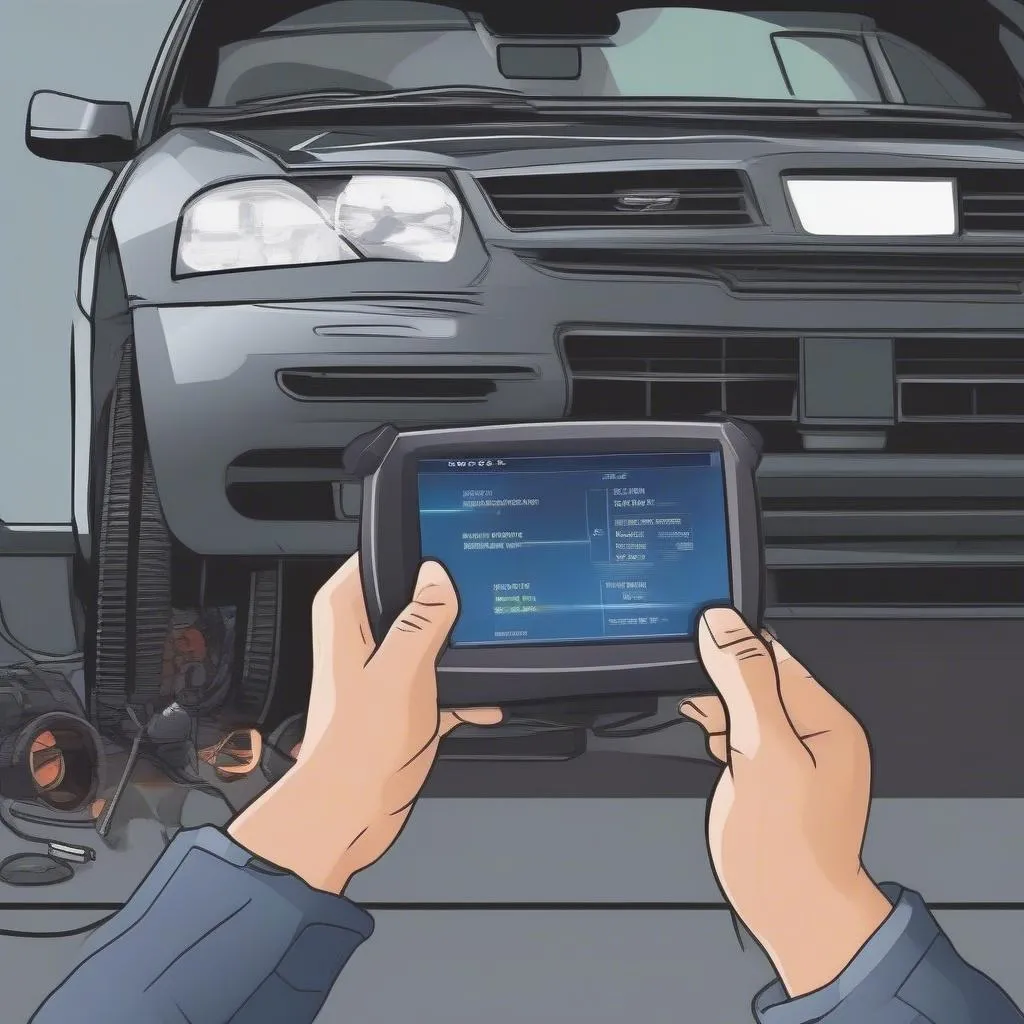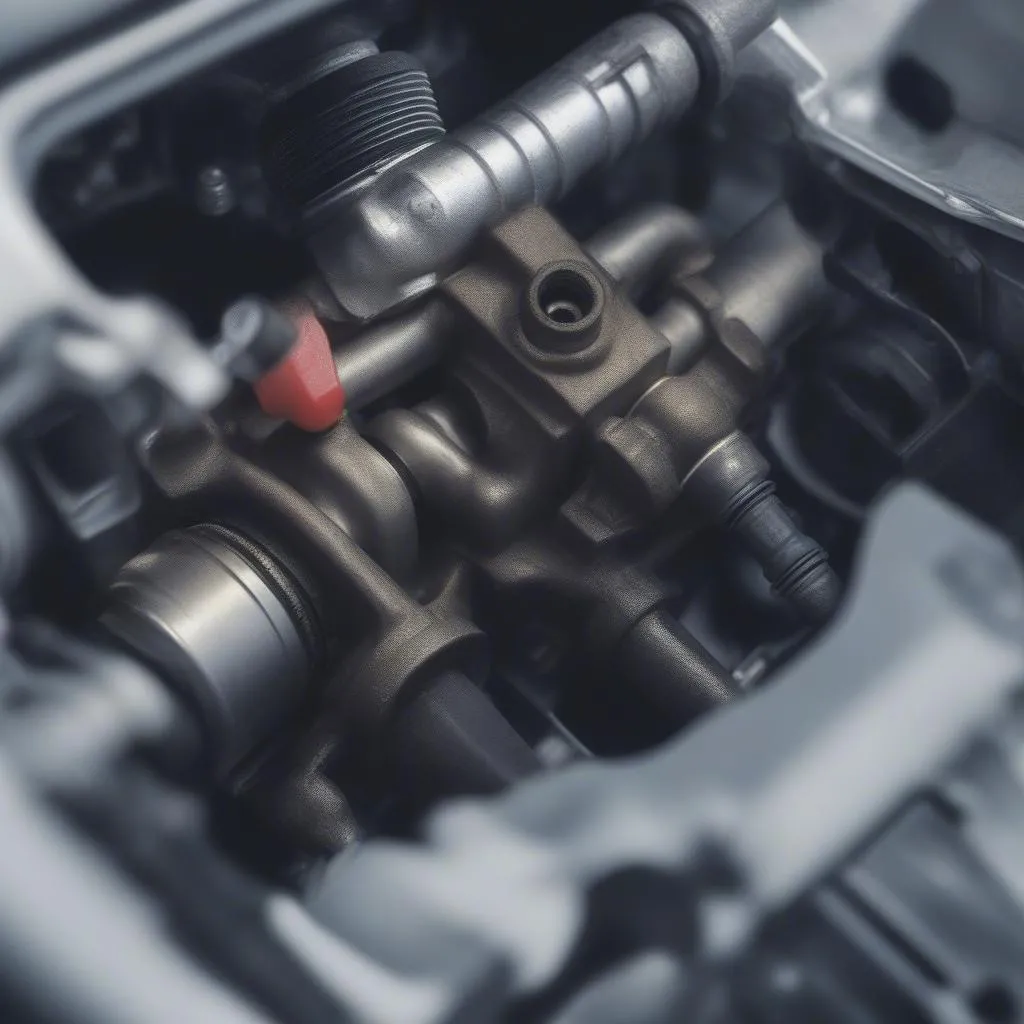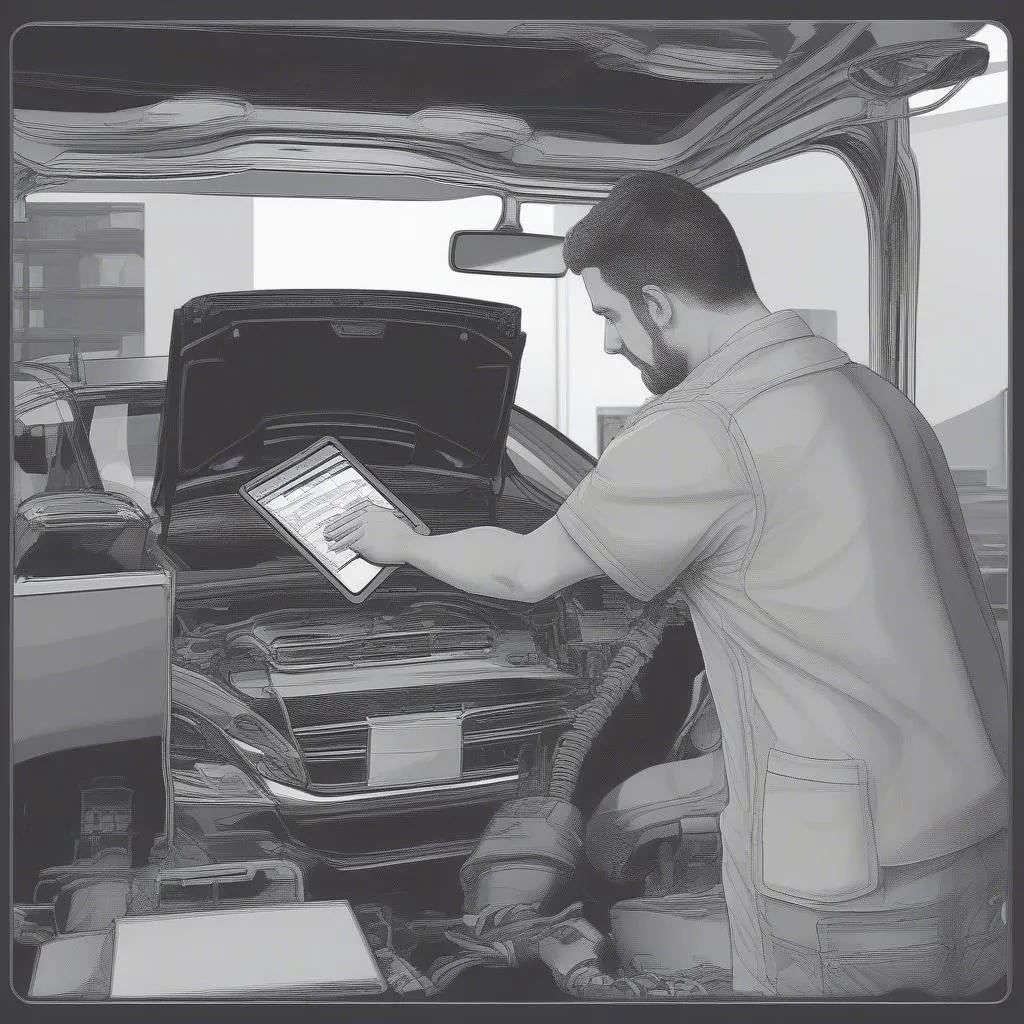Imagine you’re cruising down the highway, enjoying the open road, when suddenly your car starts to sputter and lose power. You pull over, check the engine, and find a warning light flashing on the dashboard. You pull out your trusty OBD2 scanner, plug it in, and a dreaded code appears: P0340.
What does this code mean? What should you do next? Don’t worry, you’re not alone. The P0340 code is a common issue for car owners, and in this article, we’ll break down everything you need to know about this frustrating problem.
What Does Obd Code P0340 Mean?
The P0340 code is a diagnostic trouble code (DTC) that indicates a problem with your car’s camshaft position sensor (CMP) circuit. The CMP sensor is a crucial component in your car’s ignition system, as it tells the engine control unit (ECU) the position of the camshaft, which determines when the spark plugs should fire.
Understanding the Camshaft Position Sensor
The CMP sensor is a small, magnetic sensor located near the camshaft. It sends signals to the ECU about the camshaft’s position, helping the engine to run smoothly and efficiently. Imagine it as a tiny detective, constantly reporting the position of the camshaft to the ECU.
Reasons for P0340 Error
The P0340 code can be triggered by several different issues. Here are some common reasons:
1. Camshaft Position Sensor Failure
The most common cause of the P0340 code is a malfunctioning CMP sensor. The sensor can become dirty, worn out, or damaged, preventing it from accurately detecting the camshaft’s position.
Think of the CMP sensor as a delicate instrument that can easily get out of tune.
2. Wiring Problems
The wires connecting the CMP sensor to the ECU can also be the culprit. These wires can become damaged, loose, or corroded over time, leading to a faulty signal reaching the ECU. It’s like a bad phone line, dropping the crucial signals from the CMP sensor.
3. ECU Malfunction
In rare cases, the ECU itself might be malfunctioning. This is less common but possible, as the ECU is the brain of your car, interpreting signals from the sensors.
Think of the ECU as the conductor of the orchestra, and if it’s not receiving the right signals, the entire system falls apart.
4. Camshaft Timing Issue
Occasionally, the P0340 code can be caused by a problem with the camshaft timing. The timing belt or chain can become worn or stretched, leading to a misalignment between the camshaft and the crankshaft. This can throw off the CMP sensor’s readings.
Imagine the camshaft and crankshaft like dancers, and if their steps don’t match, the entire dance goes wrong.
Common Symptoms of P0340
Beyond the flashing check engine light, the P0340 code can manifest in a few different ways:
1. Engine Misfire
One of the most noticeable symptoms of a P0340 code is engine misfiring. The car may sputter, jerk, or lose power, particularly under acceleration. It’s like the engine is struggling to keep up with the dance steps.
2. Reduced Power
The engine may also feel sluggish or lose power. It’s like the engine has lost its energy, and you’re stuck in slow motion.
3. Difficulty Starting
The car might have difficulty starting or stalling after it’s been running. It’s like the engine is trying to start the dance but can’t find its footing.
4. Rough Idle
The engine may idle roughly or shake at idle speeds. It’s like the engine is trying to stay in sync but can’t maintain the steady beat.
Fixing the P0340 Code
To fix the P0340 code, you’ll need to determine the root cause.
1. Diagnosis
Start by using an OBD2 scanner to read the specific code and any associated data. This will give you a clue about the specific problem area.
2. Inspection
Next, you’ll need to visually inspect the CMP sensor, its wiring, and the surrounding area. Look for any signs of damage, corrosion, or loose connections.
3. Replacement
If you find a faulty sensor, wire, or a timing issue, you’ll need to replace it. Make sure you use a genuine OEM part or a high-quality aftermarket replacement.
4. Professional Help
If you’re not comfortable inspecting or replacing these components yourself, seek help from a qualified mechanic. They can properly diagnose and repair the problem.
Tips for Preventing P0340
While the P0340 code can be a nuisance, there are a few things you can do to prevent it from happening in the first place:
- Regular Maintenance: Adhering to your car’s recommended maintenance schedule helps ensure all components are functioning properly.
- Quality Parts: Use genuine OEM parts or high-quality aftermarket replacements when you do need to replace components.
- Cleanliness: Keep the engine bay clean to prevent dirt and debris from accumulating on the CMP sensor.
- Check Wiring: Inspect the CMP sensor wiring regularly for signs of damage or corrosion.
Frequently Asked Questions (FAQs)
Can I drive my car with the P0340 code?
You should not drive your car with the P0340 code for an extended period. The engine may misfire, resulting in reduced fuel efficiency and potential damage to the engine. It’s best to get the issue diagnosed and repaired as soon as possible.
How much does it cost to fix a P0340 code?
The cost of fixing a P0340 code can vary depending on the cause and the specific model of your car. A new CMP sensor can cost anywhere from $50 to $200, and labor costs will vary.
What if I clear the P0340 code but it comes back?
If the P0340 code keeps coming back after you’ve cleared it, it likely indicates that the underlying issue hasn’t been addressed. You’ll need to perform a more thorough diagnosis and repair.
What brands are affected by the P0340 code?
The P0340 code can occur on vehicles from various manufacturers, including Ford, BMW, Chrysler, Nissan, and many others.
Related Articles
- Obd Code P0340: A Comprehensive Guide
- Ford OBD Code P0340: Causes, Symptoms, and Solutions
- BMW OBD Code P0340: What You Need to Know
- Chrysler OBD Code P0340: Troubleshooting and Repair
- Nissan OBD Code P0340: Diagnosis and Repair
Need Help with OBD Codes?
Don’t let OBD codes leave you stranded. Contact us at Whatsapp: +84767531508 for 24/7 support with diagnosis and repair. Our team of experts can help you get your car back on the road quickly and safely.
Conclusion
The P0340 code can be a frustrating problem, but it’s important to remember that it’s often a solvable issue. By understanding the causes, symptoms, and solutions, you can get your car back on the road and avoid any potential complications.
If you have any questions or need help diagnosing the P0340 code, feel free to leave a comment below! And remember, regular maintenance and careful inspection can help prevent this code from becoming a recurring problem.
 OBD Code P0340
OBD Code P0340
 Camshaft Position Sensor
Camshaft Position Sensor
 OBD2 Scanner
OBD2 Scanner